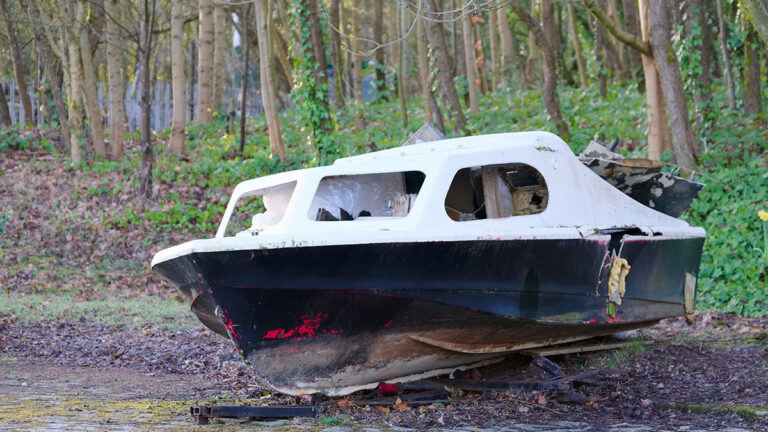From garbage gyres that choke aquatic life to microplastics that accumulate in the human body, plastic pollution in the ocean is a huge problem. People are starting to pay attention to ocean plastic. Another type of ocean pollution still doesn’t get much notice – fiberglass. On the coasts as well as along lakes and rivers, abandoned and derelict vessels (ADVs) break down in the water and wreak aquatic havoc.
Technically, fiberglass pollution is just another type of plastic pollution. Fiberglass, sometimes called glass fiber or fiber-reinforced plastic, is a composite material made from plastic resin (usually polyester, vinyl ester or epoxy) and glass fibers. It is extremely strong, lightweight, flexible, water resistant, and non-biodegradable. These qualities make it extremely useful for construction and aquatic applications.
Fiberglass’ durability makes it very hard to dispose of when products are no longer functional or wanted. Manufacturing fiberglass is also a very energy intensive process that uses fossil fuels and can release toxic air pollutants such as styrene, VOCs and smog.
Probably the best-known use of fiberglass is insulation. New fiberglass insulation no longer contains asbestos, and it is not considered a cancer risk. However, like asbestos, damaged fiberglass is friable, and the tiny particles are contact irritants when touched, inhaled, or ingested. When the fiberglass makes up the hull of a boat, it becomes a water pollutant as well.
Fiberglass Ocean Pollution
In 2018, a centuries-old oyster fishery in England closed due to massive die-off. Researchers traced the die-off to a new kind of microplastic pollution. Each kilogram of oyster meat examined contained up to 7,000 microscopic shards of fiberglass. Fiberglass “sheds” into the water when hulls scrape against rocks or the sandy bottom of lake shores and as paint flakes off. A study from the University of Oldenburg in Germany found that microplastics shed from boat hull coatings made up two-thirds of […]
Full article: earth911.com

